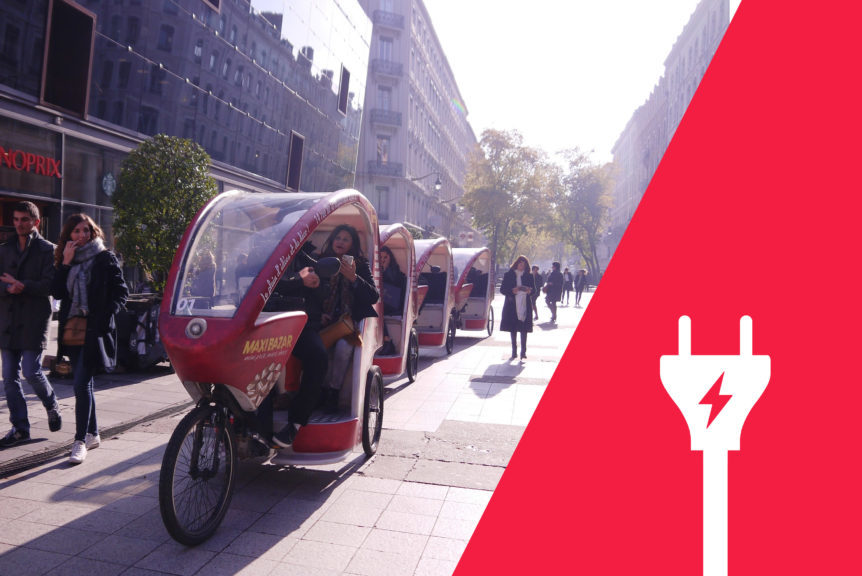For several years, pedicabs have invaded our city centers for uses as diverse as tourist trips, delivery of goods but also waste collection or street food.
The European regulation isn’t targeting specially pedicabs but electrically assisted bicycles that represent the essence of the market (several hundred thousand units sold per year).
The European directive 2002/24/EC states the criteria for an electrically assisted bike to be allowed to circulate on the public highway:
- Assistance should only be done if the cyclist is pedaling, and cut off when pedaling stops. Nevertheless, it is authorized to set up a starting assistant without having recourse to pedaling, but which must not exceed 6km/h (3,7 mph).
- The assistance must stop at 25km/h (15,5 mph) maximum.
- Motor power must not exceed 250 Watts.
The problem is that some of the uses of the pedicabs would require a power greater than 250W.
Indeed, if 250W are way enough for a bike that is only transporting one person (the driver), a pedicab is able to carry 3 persons at the same time! Not to mention that the weight of the pedicab itself is over 100kgs (220lbs), when a bicycle weight is around 20kgs (44lbs).
Therefore, the temptation is great for pedicab users to over-motorize their vehicles, by installing kits of 500W or more, especially as the technical solutions are existing.
Yokler strongly advises you not to overpower your pedicab because the risks are very important, especially with regard to insurance.
The risk arises in particular in the event of an accident and investigation on the part of the insurer who may refuse to cover you.
Some resellers or manufacturers unscrupulous do not hesitate to make false documents of conformity with engines whose power exceed the authorized limit. Not only does this engage their responsibility, but worse, their customers would find themselves uninsured in the event of an accident. A bit like if you buy a counterfeit at a quarter of the real price, by pleading good faith.
If you are considering a professional and peaceful use of yours pedicab, you should not take such a risk.
How Yokler solved this problem with its exclusive motor kit?
On your Yokler, the engine is not located in the front wheel of the vehicle like on the vast majority of low-end electrically assisted pedicabs. Our electric assistance is cleverly placed at the rear of the chassis, with a special set of sprockets. The pinions act as a lever arm, which considerably increases the available torque while remaining within the 250W limit. In a way, you benefit from a much more powerful engine while remaining compliant with the law. It was enough to think about it! 😀
With its 250W motor that complies with European regulations, your Yokler can climb hills up to 15% when empty, and up to 5% with a load of 150kg (330lbs).
Outside of Europe:
The 250W limit doesn’t apply to all countries. In Nort America, the 250W limit doesn’t apply and the tricycles can be equipped with an electric assistance of 500W. That is the reason why Yokler offers an electric assistance kit up to 500W. Of course we use the same integrated system which increases the available torque.
Discover our electric assisted tricycles !



